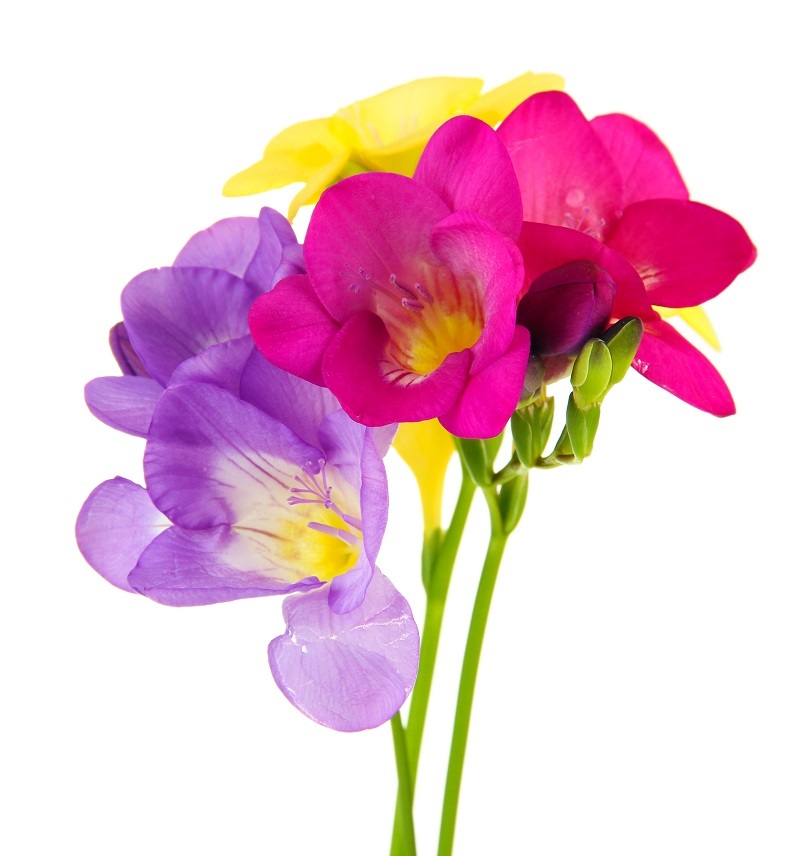Proven techniques for the care of fresh cut blossoms
Posted on 18/08/2025
Proven Techniques for the Care of Fresh Cut Blossoms
Fresh cut flowers bring natural beauty into your home, uplifting spaces with color, fragrance, and life. However, their delicate nature means they require proper care to stay vibrant and last longer. Whether you're arranging cut blossoms from your garden or caring for a professionally arranged bouquet, following the right care techniques is crucial.
This detailed guide covers proven methods for extending the life of fresh cut flowers, so you can enjoy your beautiful blooms for as long as possible. Learn everything from the best harvesting tips, water management, vase selection, and advanced techniques for fresh cut blossom care.
Understanding Fresh Cut Blossoms
Before diving into preservation methods, it's important to understand what happens when flowers are cut. Once separated from the plant, their water and nutrient supply is abruptly stopped. This makes them prone to wilting and bacteria growth, drastically reducing their vase life.
- Different flower species have unique care needs.
- Environmental factors such as temperature, humidity, and light will affect their longevity.
- Immediate and proper care after cutting or purchasing is vital for fresh cut flower preservation.

Harvesting Blossoms: The First Step
When to Cut Blossoms for Maximum Freshness
Timing is everything when harvesting flowers from your garden. Generally, the best time to cut is early in the morning or late afternoon when temperatures are cooler and water content is highest in the stems.
- Morning cuts: Plants are well-hydrated after overnight rest, resulting in turgid stems and petals.
- Late afternoon: Flowers have replenished moisture levels from the day's photosynthesis.
Avoid harvesting during the hottest part of the day as heat stresses the plant, resulting in less robust blossoms that wilt quickly.
How to Cut Flowers Properly
Use sharp, clean scissors or garden shears to make precise, angled cuts about one to two inches above a node or bud. The angled cut increases the surface area for water uptake and prevents the stem from resting flat at the bottom of the vase, which can impede water absorption.
- Opt for blooms that are just opening for maximum vase longevity.
- Avoid flowers with faded petals or drooping stems.
- Immediately place cut flowers in a clean bucket of lukewarm water outdoors.
Vase Preparation: Creating a Clean Environment
Importance of Clean Vases
One of the top proven techniques for fresh cut blossom care is ensuring your vase is thoroughly clean. Bacteria and fungi thrive in dirty containers, clogging flower stems and accelerating wilting. Wash vases with hot, soapy water, rinse thoroughly, and dry before use.
- For added sterilization, rinse with a weak bleach solution (1 part bleach to 10 parts water).
- Pay special attention to the vase's rim and base.
Water Quality and Management
The Best Water for Fresh Cut Blossoms
Fresh cut flowers absorb water through their stems to hydrate petals and foliage. Using the right water type ensures better uptake and less bacteria growth:
- Use lukewarm, distilled, or filtered water when possible. Room temperature water is less likely to shock the stems.
- If using tap water, allow it to sit out for a few hours so chlorine and chemicals can evaporate, as these may harm sensitive varieties.
Changing the Water Regularly
One of the most effective blossom care strategies is changing the water every one to two days. Frequent water changes eliminate debris, reduce bacteria buildup, and ensure blossoms always have access to clean hydration.
- Refill vases with fresh water up to about two-thirds full.
- Rinse the vase and recut stems each time you change the water for best results.
Nourishing Cut Blossoms: Flower Food and DIY Solutions
Commercial Flower Food
Florists and supermarkets often provide flower food packets with bouquets. These contain sugars (for energy), acidifiers (to balance pH), and biocides (to inhibit bacteria). When used as directed, they significantly extend the life of fresh cut flowers.
- Always dissolve the packet fully in the vase water.
- Never exceed the recommended dosage, as too much can harm flowers.
DIY Flower Food Recipes
If you don't have commercial flower food, try these homemade solutions to prolong blossom freshness:
- Recipe 1: 2 cups water, 1 tablespoon lemon or lime juice, 1 tablespoon sugar, ½ teaspoon bleach.
- Recipe 2: 1 tablespoon apple cider vinegar, 1 tablespoon sugar, 2 cups water.
Sugar provides nourishment, vinegar or lemon juice lowers pH, and bleach inhibits bacteria.
Stem Care: Cutting and Conditioning
Proper Stem Cutting Techniques
When arranging or refreshing your bouquet, always trim stems underwater using sharp clippers or a knife. This prevents embolisms (air pockets) from forming inside the stem, which block water absorption.
- Cut at a 45-degree angle for increased surface area.
- Remove 1-2 inches each time you refresh the bouquet.
- Strip leaves below the waterline to prevent rot and bacterial growth.
Hydrating Blossoms: The Conditioning Process
Conditioning is the process of rehydrating and reviving freshly cut flowers before arranging. To condition cut blossoms:
- Trim stems as described above.
- Submerge in a clean bucket of lukewarm water in a cool, dark place for 2-4 hours.
- Allow the flowers to absorb as much water as possible before arranging in the final vase.
Conditioning helps restore cell turgidity and reduces the risk of drooping and premature wilting.
Proper Placement: Maximizing Blossom Longevity
Ideal Environment for Fresh Cut Flowers
Where you display your flower arrangement directly affects how long cut blossoms last. Key factors include:
- Keep out of direct sunlight. Bright light causes excessive water loss and speeds up aging.
- Display away from heating vents and radiators, which dry out flowers quickly.
- Avoid placing near ripening fruit, which emits ethylene gas, accelerating wilting and petal drop.
- Drafts from open windows or air conditioners can dehydrate delicate blossoms.
Temperature Control
- Cooler rooms help flowers last longer. Try to keep the display area between 65-72?F (18-22?C).
- At night, move arrangements to a cooler room or refrigerate (not below 40?F or 4?C) if possible.
Specialized Blossom Care: Tips for Specific Flower Types
Managing Woody vs. Soft-Stemmed Flowers
Different flower stems require individual attention for the best results:
- Woody stems (roses, lilacs, hydrangeas): Smash the base gently with a hammer or cut vertical slits to increase water uptake.
- Soft-stemmed flowers (tulips, daffodils, poppies): Use clean, diagonal cuts and handle gently.
- For milky sap flowers (poppies, euphorbia): Singe the cut end with a flame to seal the sap and encourage water absorption.
Handling Bulb Flowers: Daffodils, Tulips, and Hyacinths
- Keep daffodils separate. They release sap that can damage other blooms. If mixing, soak them separately before combining with different types.
- Tulips continue to grow in the vase. Trim regularly and provide fresh water daily.
Extending Rose Lifespan
- Always recut stems underwater before arranging.
- Remove lower leaves and avoid overcrowding in arrangements.
- If roses wilt, submerge the entire rose in water for 1-2 hours to revive petals.
Creative and Advanced Tips for Blossom Preservation
Use a Floral Preservative Spray
Specialty stores sell anti-transpirant sprays that seal moisture into petals and foliage, slowing water loss. These are especially valuable for delicate or tropical blossoms.
Submergence for Reviving Wilted Flowers
If you notice severe wilting, try this proven method for cut flower recovery:
- Submerge the entire blossom (stem, leaves, petals) in a sink or tub of cool water for 30-60 minutes.
- Recut stems and return blooms to their vase. This rehydrates the entire structure, often bringing flowers back to life.
Anti-Bacterial Additives
- A few drops of vodka or gin in the vase water act as a natural biocide, limiting bacteria growth.
- An aspirin tablet or copper penny is an old-fashioned tip for maintaining clear, bacteria-resistant water.
Troubleshooting Common Problems
Wilting Blossoms
If your blooms droop or lose turgor quickly:
- Always recut stems under water to restore capillary action.
- Check for air pockets by seeing if the stem ends appear dry or collapsed.
- Make sure the water is clean, and the vase is not overcrowded.
Cloudy Water or Foul Odor
This is a sign of bacterial overgrowth. Immediately change water, wash the vase, and trim stems to restore freshness and prolong vase life.

Frequently Asked Questions about Fresh Cut Blossom Care
How long do fresh cut blossoms last with proper care?
Most cut flowers last 5-14 days, depending on the species and environment. Roses, alstroemeria, lilies, and chrysanthemums are among the longest-lasting. Daffodils, tulips, and poppies fade quickly without special attention.
Should I use cold or warm water for my flowers?
Use lukewarm water for most flowers. Cold water is best for bulb flowers, while very hot water (known as "searing") helps with woody stems or stubbornly wilted blossoms.
Can I revive flowers that have wilted completely?
Many can be revived by submerging the entire plant in water, recutting stems, and providing fresh, clean water. Severely desiccated or browning blooms, however, may not recover.
Is it necessary to use flower food, or do DIY solutions work?
Both commercial food and homemade solutions effectively prolong fresh cut flower life by providing sugars and inhibiting bacteria. If using a homemade mix, ensure correct proportions to avoid harming the blooms.
Conclusion: Enjoying the Maximum Longevity of Fresh Cut Blossoms
The beauty of fresh cut blossoms can be admired for days or even weeks when cared for using the best, proven techniques. By selecting optimal blooms, using clean tools and containers, nourishing with the right solutions, and maintaining the perfect environment, you'll enjoy the vibrancy, fragrance, and life that fresh flowers bring to any setting.
Remember the key to successful blossom care is consistency: change water often, trim stems regularly, and keep arrangements away from heat, fruit, and direct sunlight.
With these comprehensive tips for extending the life of fresh cut flowers, your arrangements will continue to delight and inspire, making every space feel more welcoming and alive. Try these methods today and discover how simple habits can dramatically improve the lifespan of your fresh floral displays!
Latest Posts
Seasonal Blooms: Top Flower Choices for [AREA] in Spring 2024
Preserve Your Poinsettias: Simple Steps for Longevity
Celebrate Birthdays with Stunning Floral Arrangements






